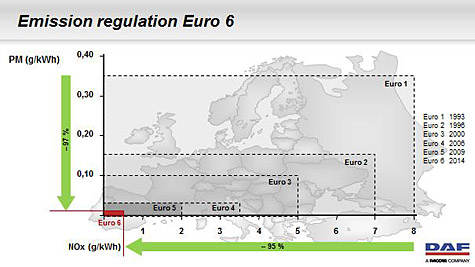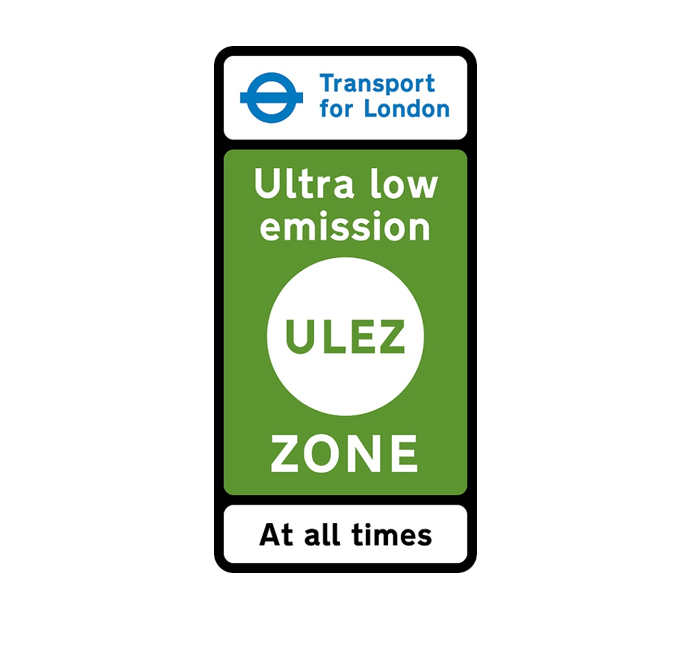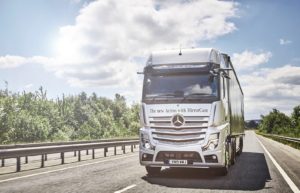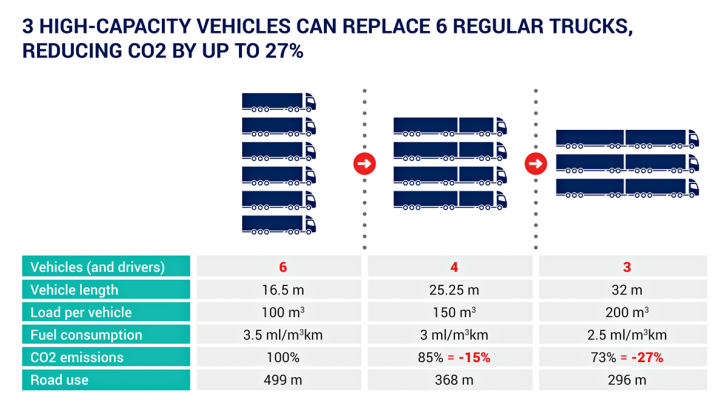Truck Emission Levels – some Background
With the ULEZ (Ultra Low Emission Zone) now in full swing across London and a dozen more UK cities set to join the low emission party, you could find yourself on the wrong side of a hefty charge if you venture into an area that makes up a low emission zone. These zones only want the cleanest of trucks to enter. Think that that new truck you bought back in early 2014 is still bang up to date? Think again. These low emission zones are primarily only considering Euro 6 trucks. These are trucks that were made after October 2014.
What are the Euro Levels?
OK, so this is back to basics, but for completeness sake, it is worth giving a brief timeline.
Euro 1
Let’s forget the vintage truck brigade and start the history in October 1993 when Euro 1 was introduced. This was not much more than an attempt to get all manufacturers on the same level playing field. The Particulate Matter (PM) and Nitrogen Oxides (NOx) targets were not too high, but it was the first time that the truck makers had to take their eyes off the MPG ball, (the determinant of the amount of CO2 produced) to concentrate on the other emissions from a truck exhaust.
Euro 2
Euro 2 came in 1993 and lasted until 1996 and pretty much halved the amount of PM entering the atmosphere from a new truck. The NOx levels were down by only by about 12%
Euro 3
Euro 3 arrived in October 2000 and lasted until 2006 and took a third off the OM emissions and reduced the NOx emissions by about 25%.
Euro 4
The first change that required wholesale adoption of new technology came in 2006 with Euro 4. This saw trucks fitted with exhaust after-treatment systems – either Exhaust Gas Recirculation (EGR) or Selective Catalyst Reduction (SCR) – more on these technologies below. This meant a lot of investment on behalf of the truck manufacturers and therefore dreaded price increases for the truck operators. The good news was that this technology brought the emissions levels down tremendously. Such was the effectiveness of the Euro 4 technology, most manufacturers jumped straight to Euro 5 to steal a march on the competition.
The manufacturers adopted slightly different strategies to deal with The challenging Euro 4 standards. Most went along the SCR route – this is a technology that injects Ablue (Urea) into the exhaust after it has left the engine. This is more straightforward technology that the EGR alternative which puts the exhaust back into the engine. The benefit of the EGR engine is that the operator need not use Adblue – a costly chemical that requires an infrastructure to be put in place to make sure that the trucks always have the liquid on board.
MAN Trucks were the manufacturer that famously offered the EGR only system ‘Add Nothing’ was their campaign slogan, persuading operators that investment in the Adblue infrastructure and ongoing consumable was not worthwhile. Scania too offered an EGR only solution, but SCR remained their method of choice.
In the ensuing battle for Euro 4 market share, it seems that the SCR brigade won out – if only because everyone new that SCR would be needed at Euro 6 so the operators would have to invest in the infrastructure in any case. Also MAN struggled with reliability problems in only one of their EGR engines, but the publicity cast a shadow on this technology.
Euro 5
Euro 5 was brought in for October 2009, but in reality these trucks had been around for some years. The levels of PM emissions for Euro 5 were the same as for Euro 4, the difference was in the NOx levels which were reduced by almost a half.
You would think that it would not be possible to get an engine running cleaner than a Euro 5, but look at the small red zone on the DAF chart and you will see how low the emissions of a Euro 6 truck are even compared to a Euro 5.
All trucks at Euro 5 were using SCR, (with Scania and MAN using SCR in combination).


Euro 6
This was the most significant change – and is mooted that it is the last standard to be introduced that focuses on the reduction of PM and NOx levels. Although the standard came out in January 2014, there were so many Euro 5 trucks registered in the last three months of 2013 that nobody was ready to buy a Euro 6 truck until well into 2014! It was the best December on record for new truck registrations back in 2013!
Every truck manufacturer was expected to use a combination of EGR and SCR to achieve the targets. Iveco managed to break ranks and develop their ‘Hi-SCR’ system that does not need the complicated EGR systems as well. Scania followed suit later with their version of SCR only on selected engines at Euro 6.
Increasingly, only trucks that meet the Euro 6 standard will be allowed in the UK’s major cities. That is why Truckpages has a specialist search filter to show you only trucks that meet the Euro 6 criteria.
My Truck was Registered around October 2013!
Think you can just search for a 2014 truck for sale and assume that it is Euro 6? Be careful. The lines were blurred around the time of introduction of Euro 6 which meant that there were lots of Euro 5 trucks registered right a the end of 2013. There may well have been some others slipping through the net at a later stage. Always double check using the TfL’s checker to see if it can get into the ULEZ without a charge.

When is Euro 7?
That seems to be that, as far as new Euro standards are concerned. Truck makers are pleased that they can now get on with making trucks that are more fuel efficient and can therefore help to reduce CO2 as well as saving operators money.
The problem for the truck manufacturers is that in 2019, the European Parliament, Commission and national governments have all agreed on a CO2 reduction standard for heavy duty trucks.
In broad terms, there needs to be a 15% improvement in CO2 emissions by 2025 and a 30% reduction by 2030. This will need wider use of alternative fuels, despite the fact that there are practically no locations to refuel a CNG/LNG truck or recharge a battery for a plug in hybrid!
The truck manufacturers believe that road transport could save more by becoming more efficient and using larger capacity trucks. They believe that one high capacity truck could replace three standard ones. Read their report here.

